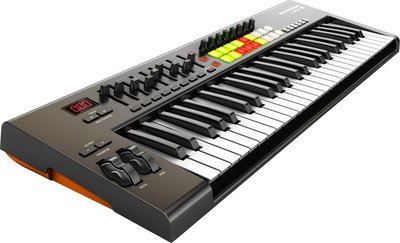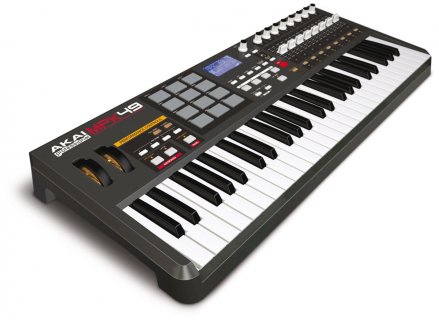Hi all - new to this site, so ... hello!
Ok, I've decided to build a ludicrous and minimal midi keyboard, a la :

I don't need drum pads, I don't need sliders. I want a pitch and a mod wheel, 3 or 4 knobs. 49 keys. Octave up/down. Oh, and I'd like the wheels to be lit, that'd be nice.
That's it!
So - what's the best way to go about this? Is it to rehouse a midi keyboard, and move the knobs and wheels to where I want them...?
But which keyboard will do all I need here?
The options out there either have the elements I need - but with a ton of added stuff - or the don't have pitch/mod wheels.
Something like the Akai Miniak is almost perfect (3 wheels which are backlit, minimal knobs) except it doesn't have 49 keys. And it's not a (dedicated) midi keyboard.
Or should I take something like a Novation Launchkey, and remove sliders/pads when building the housing :

Or even obtain parts and build that way? (Honestly, that option would be something I'd not have a clue on, so would need a dummies guide).
Any suggestions...?
Ok, I've decided to build a ludicrous and minimal midi keyboard, a la :

I don't need drum pads, I don't need sliders. I want a pitch and a mod wheel, 3 or 4 knobs. 49 keys. Octave up/down. Oh, and I'd like the wheels to be lit, that'd be nice.
That's it!
So - what's the best way to go about this? Is it to rehouse a midi keyboard, and move the knobs and wheels to where I want them...?
But which keyboard will do all I need here?
The options out there either have the elements I need - but with a ton of added stuff - or the don't have pitch/mod wheels.
Something like the Akai Miniak is almost perfect (3 wheels which are backlit, minimal knobs) except it doesn't have 49 keys. And it's not a (dedicated) midi keyboard.
Or should I take something like a Novation Launchkey, and remove sliders/pads when building the housing :

Or even obtain parts and build that way? (Honestly, that option would be something I'd not have a clue on, so would need a dummies guide).
Any suggestions...?


